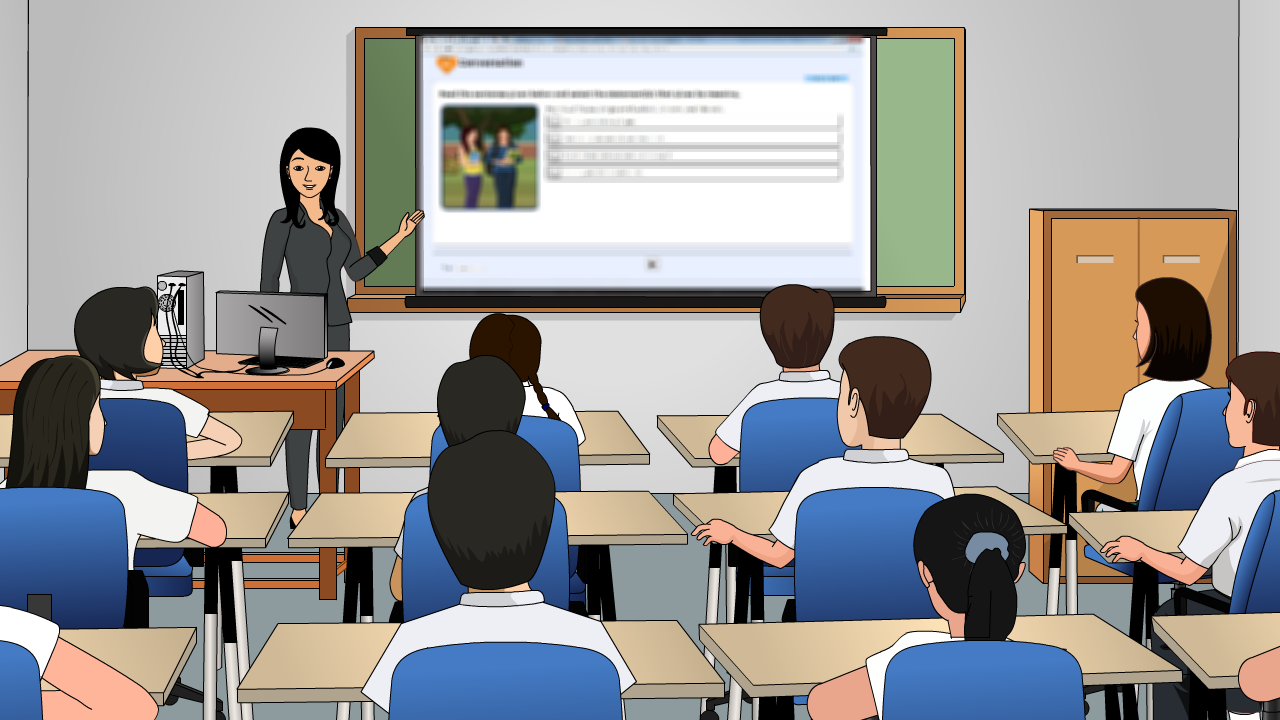Language Lab
Language Lab
A Language Lab is an educational tool designed to enhance students' language learning experience by providing them with a technological platform to practice and improve their speaking, listening, reading, and writing skills. It offers a structured environment that integrates multimedia resources, interactive software, and real-time feedback, enabling students to gain proficiency in any language they are studying. Uttam International School, a well-equipped language lab can significantly enhance the overall learning experience, especially in mastering English and foreign languages.
1. Benefits of a Language Lab
-
Improved Language Skills: A language lab helps students develop their speaking, listening, pronunciation, and comprehension skills in an immersive and interactive way. With tools like voice recognition, students can get real-time feedback on their pronunciation, helping them fine-tune their speaking skills.
-
Personalized Learning: Students can learn at their own pace in a language lab. They can practice listening to dialogues, repeat phrases, or take part in interactive exercises that focus on areas where they need improvement.
-
Increased Engagement: The use of multimedia tools like videos, audio recordings, and interactive software makes the learning process more engaging, keeping students interested and motivated.
-
Focus on Pronunciation and Accent: Through listening and speaking exercises, students can improve their pronunciation, accent, and intonation, making them more confident when communicating in the target language.
-
Real-Time Feedback and Assessment: Language labs offer immediate feedback on pronunciation and grammar, allowing students to self-correct and learn independently. Teachers can monitor student progress in real time and provide guidance where needed.
-
Enhanced Listening Skills: The language lab environment allows students to listen to native speakers and various accents, improving their listening skills and ability to understand different pronunciations and intonations.
2. Components of a Modern Language Lab
-
Computer Workstations: Equipped with language learning software, headphones, and microphones, these stations allow students to practice listening, speaking, and even record their responses for review.
-
Multimedia Resources: Videos, audios, and interactive software programs play a crucial role in making the language learning process dynamic. These resources help students understand cultural nuances, idiomatic expressions, and real-life language use.
-
Speech Recognition Software: Advanced language labs come with speech recognition software that can assess a student’s pronunciation and provide feedback, helping them improve their speaking skills.
-
Digital Dictionaries and Language Apps: Students can access digital dictionaries, grammar guides, and language learning apps for further study and practice. These tools provide resources for vocabulary building, grammar correction, and translation.
-
Group Interaction Tools: Language labs often have systems that allow group activities, where students can interact with each other and practice conversations in pairs or small groups. This encourages teamwork and social learning.
-
Recording and Playback Facilities: Students can record their speech, listen to it, and compare it to native pronunciation. This helps them identify mistakes and make corrections.
-
Interactive Whiteboards and Projectors: Used for collaborative learning and interactive lessons, these tools allow teachers to present videos, slides, and exercises to the class, creating a more engaging and effective learning environment.
3. How Language Labs Enhance Language Learning
-
Listening Comprehension: A key aspect of language learning is the ability to understand spoken language. In a language lab, students can listen to dialogues, interviews, news broadcasts, and podcasts in the target language. This exposure improves their listening comprehension and ability to understand various accents.
-
Pronunciation Practice: A language lab provides an opportunity for students to practice their pronunciation by repeating words or sentences, while listening to native speakers. The speech recognition system helps evaluate and correct their pronunciation, making it more accurate.
-
Speaking Skills: Many language labs include interactive speaking exercises, where students are required to speak into the microphone and record their voices. This can help build confidence and fluency in conversation.
-
Grammar and Vocabulary Exercises: Interactive software can be used to provide grammar exercises and vocabulary drills. These programs can offer immediate corrections, helping students master language rules more efficiently.
-
Cultural Immersion: Some advanced language labs offer videos, music, and cultural content that allow students to experience the culture associated with the language. This can include virtual tours, interviews with native speakers, or movies that give insights into cultural expressions and idioms.
